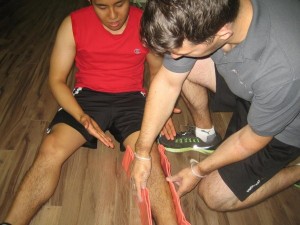What is a femur fracture?
Femur, the longest and strongest bone of human body, contributes the skeleton of the thigh. Since femur is the strongest bone with a lot of muscle bulk veiling it, only hard forces (for instance car crashes, falling from heights) can cause it to break away.
Types of femur fracture:
Femur is divided into different parts anatomically, which means fracture at a specific point will give the fracture specific name; following femur fractures occur commonly:
– Fracture of femoral head
– Fracture of femoral neck
– Subtrochanteric fracture
– Fracture of the shaft of femur
The first three fractures are usually associated with hip fractures and involve the proximal part of the bone.
A sharp thrust may cause dislocation of hip bone, leading especially to the fracture of the femoral head.
Subtrochanteric fracture involves the shaft of the femur immediately beneath the greater and lesser trochanter.
Fractures of shaft of femur:
The fracture of the shaft of the femur is classified into three types:
– Type 1: spiral or transverse
The bone breaks either spirally or in a linear pattern, completely separated from the other part.
– Type 2: comminuted
In this type the bone breaks away into little fragments.
– Type 3: open
Open fractures are those in which the bone breaks completely with piercing the surrounding tissue; that includes skin and muscles. This type may alternatively be known as: compound fracture.
Other types of fractures are:
Greenstick fracture: a fracture in which bone doesn’t completely separate from the other part. The fracture in turn spans only half way through the bone. This fracture is therefore an incomplete fracture.
Femur fracture Causes:
– High energy collisions
– Car or motorbike crashes
– Gunshot wounds (uncommon)
– Free fall with direct landing on legs causing an upward thrust (associated with other fractures of lower limb)
– Osteoporosis or osteopenia
– Low force incidents- with nutritional deficiencies (weaker bones)
Femur fracture Symptoms and investigations:
The symptoms include:
– Deformed bone
– Bruises (at times)
– If open fracture occurs, the bone may itself be seen.
For further investigations and confirmations the doctor may ask you to get an x-ray or CT (Computed Tomography) done.
Femur fracture Complications:
Breakage of a femur bone can cause sharp ends to sever the surrounding blood vessels. This may lead to formation of clots. The clots may detach and run in the blood as emboli. These disseminating emboli can cause further complications by plugging into small blood vessels of body and blocking their blood flow leading to ischemia.
The sharp ends of bone may also damage the nerves of environs.
Infections, fat embolism, non- or mal- alignment are some other complications.
Femur fracture Treatment and recovery:
Treatment depends on severity of injury and maybe surgical or non surgical.
The femur fractures usually involve surgical treatment. If, however, the 
2-3 month strict rest and immobility are important to let the bone settle in its place and avoid mal-alignment.
